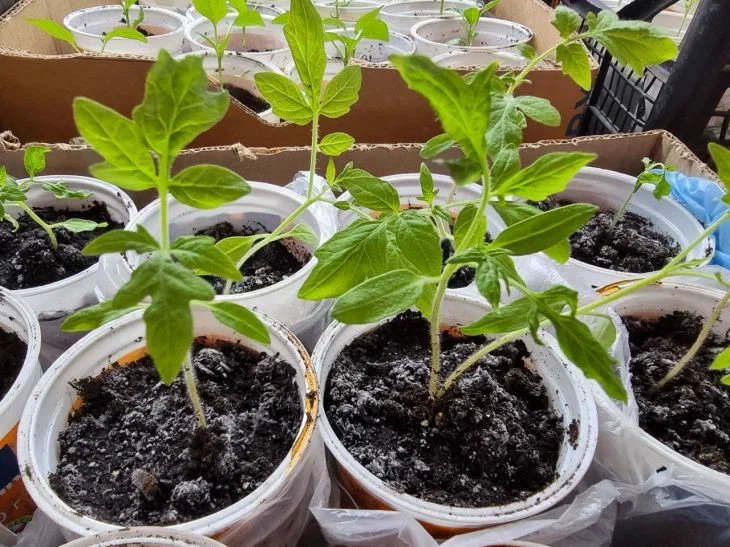Features of growing seedlings on a window in urban conditions: what summer residents need to consider
Growing seedlings on windowsills in urban conditions is a great way to get fresh and tasty vegetables, even if you don’t have a large garden or summer cottage.
However, growing seedlings on windowsills in urban conditions has its own characteristics that should be taken into account.
Anastasia Kovrizhnykh , an expert of the online publication "BelNovosti", an agronomist and landscape designer, spoke about the peculiarities of growing seedlings in urban conditions.
Choosing a place to grow seedlings
Before you start growing seedlings on a windowsill in urban conditions, you need to choose a suitable location.
It is best to choose windows that face south or southeast, as these areas have the brightest lighting.

You also need to make sure that the window is wide and high enough to accommodate the plants.
Selecting pots and soil
To grow seedlings on the windowsill, you can use regular pots, but it is best to choose pots with a drainage system.
To sow seedlings, you need special soil, which can be purchased in stores or prepared independently from peat, humus and sand.
Preparing the soil and sowing seedlings
Before sowing seedlings, it is necessary to carefully prepare the soil. The soil must be sifted to get rid of large lumps and ensure good ventilation.
For sowing seedlings, it is best to use seeds of high-quality vegetable varieties. The seeds should be buried to a depth equal to two to three diameters of the seed.
Caring for seedlings
After sowing the seedlings, it is necessary to provide them with proper care. The seedlings need to be watered regularly, but not over-watered, so as not to cause root rot.
It is also necessary to provide sufficient lighting for the plants. If there is not enough bright sunlight on the windows, additional light sources can be used.
Selection of vegetable varieties
When choosing vegetable varieties for growing on windowsills in urban conditions, you should consider not only their taste, but also their ability to adapt to urban living conditions. Some vegetables, such as tomatoes, peppers, and eggplants, require a lot of sunlight and heat, so the sunniest windows are needed for their cultivation. However, some vegetables, such as onions, carrots, and lettuce, can easily grow on windowsills in shadier places.
Protecting seedlings from pests and diseases
When growing seedlings on windowsills in urban conditions, attention should be paid to protecting plants from pests and diseases.
Plants can fall prey to harmful insects such as aphids and spider mites.
To prevent plant damage, you can use natural pest control methods such as soap solution or garlic infusion.
Choosing the time for planting seedlings in open ground
When the seedlings grow large enough, they can be transplanted into open ground. However, before this, it is necessary to choose the right time for transplanting.
It is necessary to take into account the climate and air temperature. Some vegetables, such as tomatoes and peppers, are best transplanted into the ground when it is consistently warm outside and the soil has warmed up to 10-12 degrees.
Other vegetables, such as carrots and lettuce, can be planted in the ground earlier, when it is still quite cool.
Growing seedlings on windowsills in urban areas can be a fun and interesting hobby that allows you to get fresh and tasty vegetables right at home.
However, to successfully grow seedlings, it is necessary to take into account many factors, such as choosing a location, choosing pots and soil, proper plant care and protection from pests and diseases.
By following these recommendations, you can get a great harvest of vegetables right on your windowsills.
Earlier we talked about whether it is worth startinga winter garden .
